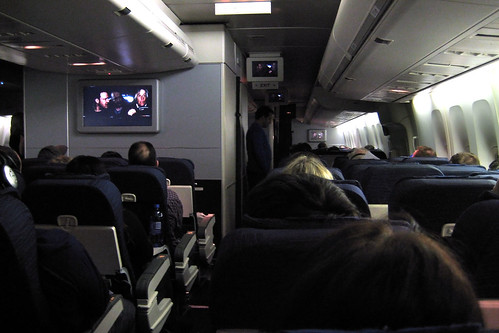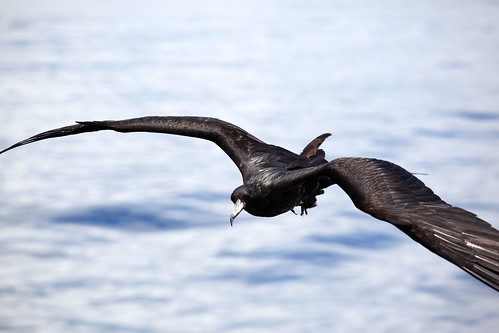

| Archive Blog Cast Forum RSS Books! Poll Results About Search Fan Art Podcast More Stuff Random |
|
Classic comic reruns every day
|
1 {photo of planes at an airport}
1 Caption: Flight
|
First (1) | Previous (3344) | Next (3346) || Latest Rerun (2891) |
Latest New (5380) First 5 | Previous 5 | Next 5 | Latest 5 Annotations theme: First | Previous | Next | Latest || First 5 | Previous 5 | Next 5 | Latest 5 This strip's permanent URL: http://www.irregularwebcomic.net/3345.html
Annotations off: turn on
Annotations on: turn off
|
 Stuck in a seat for 14 hours. |
I was somewhat reluctant to attend, however, because it's not all fun and games. I'm expected to attend the academic presentations, not the fun movie and video game stuff that will be held in parallel at the same time, and when I get back to work I need to write a report covering what I've seen, which serves to justify the expense to the company. And then there's the flying.
It's a 14 hour flight direct from Sydney to Vancouver on Air Canada. I stated quite clearly to our travel coordinator that I did not want to fly via Los Angeles. We get economy class seats for business trips (I don't know why they call the next level up "business class" - work never pays for those!). And since I'm taller than average, these seats are painfully cramped and I essentially spend the whole flight with my knees pressed into the back of the person in front, unable to sleep despite being horrendously tired.
It used to be that if you arrived early enough at the airport to check in you could request, and sometimes be given, an exit row seat. These have no seats immediately in front of them, so have glorious amounts of leg room. But recently airlines have cottoned on to the idea that some passengers might be willing to pay extra for these seats, and so have started allowing them to be booked in advance for a fee. Between Sydney and San Francisco, this extra cost is a bit over $100 per flight. I paid for it out of my own pocket on my last two trips there (over what my company paid for the basic flight), and for me it is well worth the money.
 To soar like a bird... |
Because now flights are just the painful things that happen in between home and the place where you are going to have a fun vacation (or the place where you need to concentrate on work for a few days before heading home again). Flying has become routine, and annoying. It wasn't always this way.
People have dreamt of flying for perhaps as long as people have been watching birds. It seems to be a natural thing for us to wish to be able to do. There is the Ancient Greek legend of Daedalus, an engineer and inventor and advisor to King Minos of Crete. We've met Daedalus before in the context of the Cretan Labyrinth in the Palace of Knossos and the genesis of the Minotaur (the story of which I have covered briefly here and here). But Daedalus is perhaps even better known in the story of himself and his son Icarus.
Having constructed the Labyrinth to keep the Minotaur safely locked away, Daedalus was of course the only person who could navigate the twisty passages, all alike. King Minos didn't want anyone else to get this knowledge, so he locked Daedalus away in a prison. Being Ancient Greece, he threw Daedalus's son Icarus in as well, for good measure. Not impressed with the king's hospitality, Daedalus engineered an escape plan. He managed to get enough feathers to build two pairs of giant wings, sticking them together with wax. Attaching these to his own and Icarus's arms with more wax, they took off like birds and flew away from their island prison.
 A Tiger Moth biplane. |
Even in this early myth, humans fantasised about flying and about how wonderful a feeling it must be to soar like a bird. Inventors down the centuries tried to make this dream come true. Leonardo da Vinci famously scribbled down designs for dozens of flying machines, none of which were practical with the technology of his time. Human muscles alone were simply not strong enough to power a flying machine (at least not without the benefit of a century of aerospace engineering and late 20th century materials science).
There were a few approaches to flying. A popular one, naturally enough, was to mimic the flapping wings of a bird, since it clearly worked for them, by attaching wings to people's arms or driving a set of wings by some mechanical contrivance. This was doomed to failure as human muscles just aren't up to the task of generating enough lift this way. Another approach is an air screw, similar to a water screw, the principles of operation of which were well known by Leonardo's time. This essentially gives you a helicopter, which is a viable way to fly if you can provide enough power to the screw. Unfortunately, "enough power" is a lot more than a human can provide, and Leonardo had no other option available.
A third approach to flying is to adopt the gliding posture of birds when they soar without flapping their wings. A machine with a stiff, fixed wing is more stable than one which can be flapped, and it allows a pilot to glide for extended periods through the air, especially if given some manoeuvrability and some skill in navigating the lift provided by rising thermals. The engineering problems were still substantial though, mostly in finding materials both strong enough and yet light enough to perform the job.
 Paragliding, a modern descendant of Lilienthal's experiments. |
This was actually well after people had made flights using balloons, beginning with the Montgolfier brothers in 1783. Using a craft that was lighter than air so it simply floated upwards had already turned out to be the easiest method to achieve flight. It requires little in the way of sophisticated equipment. In fact, the technological components needed for flying a hot air balloon (cloth, ropes, fire) were all present over 2000 years ago in the civilisations of the Ancient Egyptians and Greeks. All that was needed was the vision to combine them into a balloon and the courage to attempt it.
But returning to heavier-than-air flying machines, the design that was ultimately the most successful was fixed wings to provide stability and lift, combined with a method of forward propulsion to move the craft through the air. The forward motion pushes the wings through the air. A slight angle of the wings (known as the angle of attack) deflects the air downwards and, by Newton's third law of motion, the reaction provides an upwards force on the wings. An appropriate cross sectional shape of the wings can also induce air to flow faster over the upper surface than the lower surface, inducing additional upwards force by Bernoulli's principle, though this is usually much less than the force provided by deflecting the air flow (in contrast to the common myth-conception that the Bernoulli force provides all the lift).
 Modern jetliners at an airport. |
Once the concept had been proven to work, aeroplanes developed rapidly, and by the First World War were in use as combat machines. The shape of planes was refined over time as we began to understand aerodynamics better. We still use propellers as the propulsion system for many planes, but the largest and fastest use the more powerful jet engine, developed in the 1930s. And so we arrive more or less at the present day.
There have been some other experiments in flight. Notably, rocket propulsion has been used for some experimental planes and, of course, for launching vehicles through the air and ultimately on into space. And as we have invented lighter and stronger materials, we have managed to fly delicate craft powered only by human muscle power, delivered through carefully designed gearing systems to provide the maximum thrust to weight ratio.
Flight has been a grand adventure, originating in the dreams of soaring with the birds which most of us experience wistfully at some point or other. Human desire and ingenuity have brought us far from the days of the ancient civilisations and the myth of Daedalus. We can take to the air and experience something wonderful, almost magical. The only problem now is that we too often take it for granted.
|
LEGO® is a registered trademark of the LEGO Group of companies,
which does not sponsor, authorise, or endorse this site. This material is presented in accordance with the LEGO® Fair Play Guidelines. |